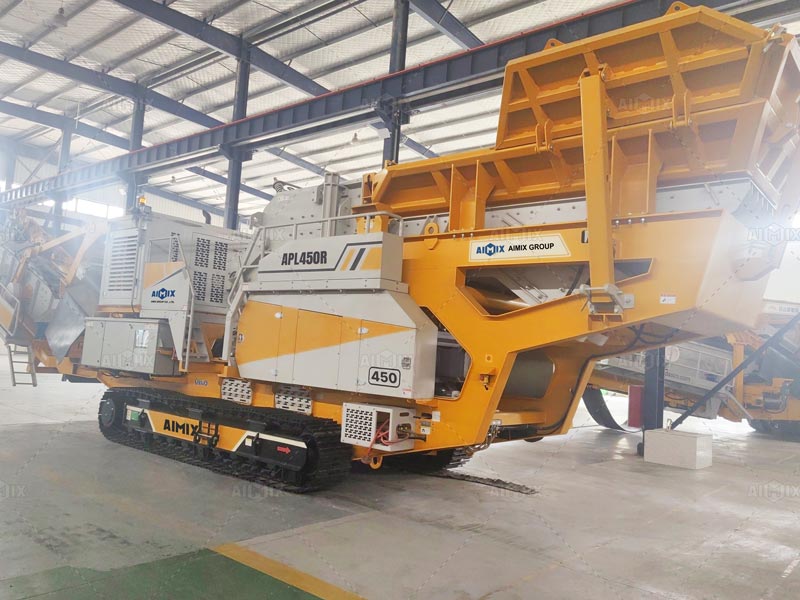In the mining and aggregates industry, ensuring the full functionality and efficiency of a stone crusher plant before it is deployed on-site is essential. A thorough commissioning process followed by rigorous testing ensures that each machine meets performance standards while also providing a safe and ergonomic working environment. This technical closed loop—spanning from functional commissioning to ergonomic testing—ensures that the equipment not only delivers in terms of crushing efficiency but also aligns with user safety and comfort, which ultimately enhances productivity and reduces downtime.
The Importance of Functional Commissioning
Functional commissioning is the cornerstone of any new stone crusher plant installation. It involves a series of steps designed to validate whether all components of the equipment function according to specifications. This step is vital for ensuring that the crusher operates at optimal capacity and adheres to the required performance standards.
During this stage, technicians test critical components such as:
-
The crushing mechanism
-
Hydraulic systems
-
Electrical and control systems
-
Feeder and discharge conveyors
-
Lubrication systems
Each of these components is tested under load, which mimics real-world operational conditions. The goal is to identify and fix any issues before the equipment reaches the production site. By conducting these tests in a controlled environment, manufacturers can address potential faults without interrupting the client’s workflow once the equipment is in operation.

Performance Testing: Ensuring Optimal Crushing Efficiency
Once functional commissioning is complete, the next step is performance testing. This testing phase checks if the stone crusher plant is achieving the desired output levels and efficiency. Crushers are tested with different materials to simulate various working conditions, including variations in rock hardness, moisture content, and feed size.
Performance testing typically includes:
-
Load testing to ensure the crusher can handle peak loads without failure
-
Throughput measurement to verify that the plant produces the required quantity of crushed material
-
Monitoring the quality of the output material to ensure it meets specifications for size and consistency
-
Vibration and noise level testing to ensure compliance with safety and environmental regulations
By completing this phase, manufacturers can be certain that the stone crusher plant(planta trituradora) will perform efficiently and meet the customer’s expectations once it is installed.
Ergonomic Testing: Prioritizing Operator Safety and Comfort
While functional and performance testing are essential for machine efficiency, ergonomic testing is equally important to ensure the safety and comfort of operators. Mining and construction environments can be physically demanding, and poorly designed machinery can lead to operator fatigue, strain, and even long-term injuries.
Ergonomic testing focuses on the following aspects:
Operator Control Interfaces
The layout and accessibility of controls are evaluated to ensure that operators can easily interact with the machine without straining. This includes assessing the placement of buttons, levers, and displays. A well-designed interface reduces the risk of operator error and enhances overall efficiency.
Visibility and Accessibility
Ensuring clear visibility is crucial for safe operation, especially when the machine is being operated in busy or hazardous environments. Ergonomic testing includes checking the placement of cameras, mirrors, and other systems that assist operators in monitoring the machine’s surroundings. Accessibility to key maintenance points is also evaluated to minimize downtime during routine servicing.
Vibration and Noise Control
Long-term exposure to vibrations and excessive noise can cause operator discomfort and even health issues. During ergonomic testing, the vibration levels of the machine are carefully measured, and noise-reduction measures are implemented. This is particularly important in stone crusher plant setups, where prolonged exposure to such conditions can impact the well-being of workers.
Seat Design and Comfort
Operators spend long hours in front of the machine, which makes seat design crucial. Proper seating ensures that operators maintain good posture and minimizes strain on their back, arms, and neck. During ergonomic testing, seats are adjusted and tested for comfort, especially when operating in challenging environments.
Final Inspection and Quality Assurance
Once all the functional, performance, and ergonomic tests are completed, the stone crusher plant undergoes a final inspection to ensure it meets all design and safety standards. The quality assurance process includes verifying the machine’s compliance with local regulations, safety certifications, and operational standards. Manufacturers also check for any signs of wear or damage that may have occurred during testing.
This final inspection serves as a quality checkpoint, ensuring that the machine is not only functional and efficient but also safe and ergonomic for long-term use.
Conclusion: Closing the Technical Loop
The process of commissioning and testing a stone crusher plant does not end with performance validation. It extends through a complete technical loop that includes functional commissioning, performance optimization, and ergonomic testing. Each of these stages is crucial for ensuring that the equipment will operate efficiently, safely, and comfortably in real-world conditions.
By thoroughly addressing these areas, manufacturers can deliver high-quality, reliable machinery that meets customer expectations, minimizes operational risks, and supports long-term productivity. For clients in regions with challenging operational environments, such as Latin America, this comprehensive approach ensures that the plant performs well under varying conditions while prioritizing operator health and safety.

Leave a Reply